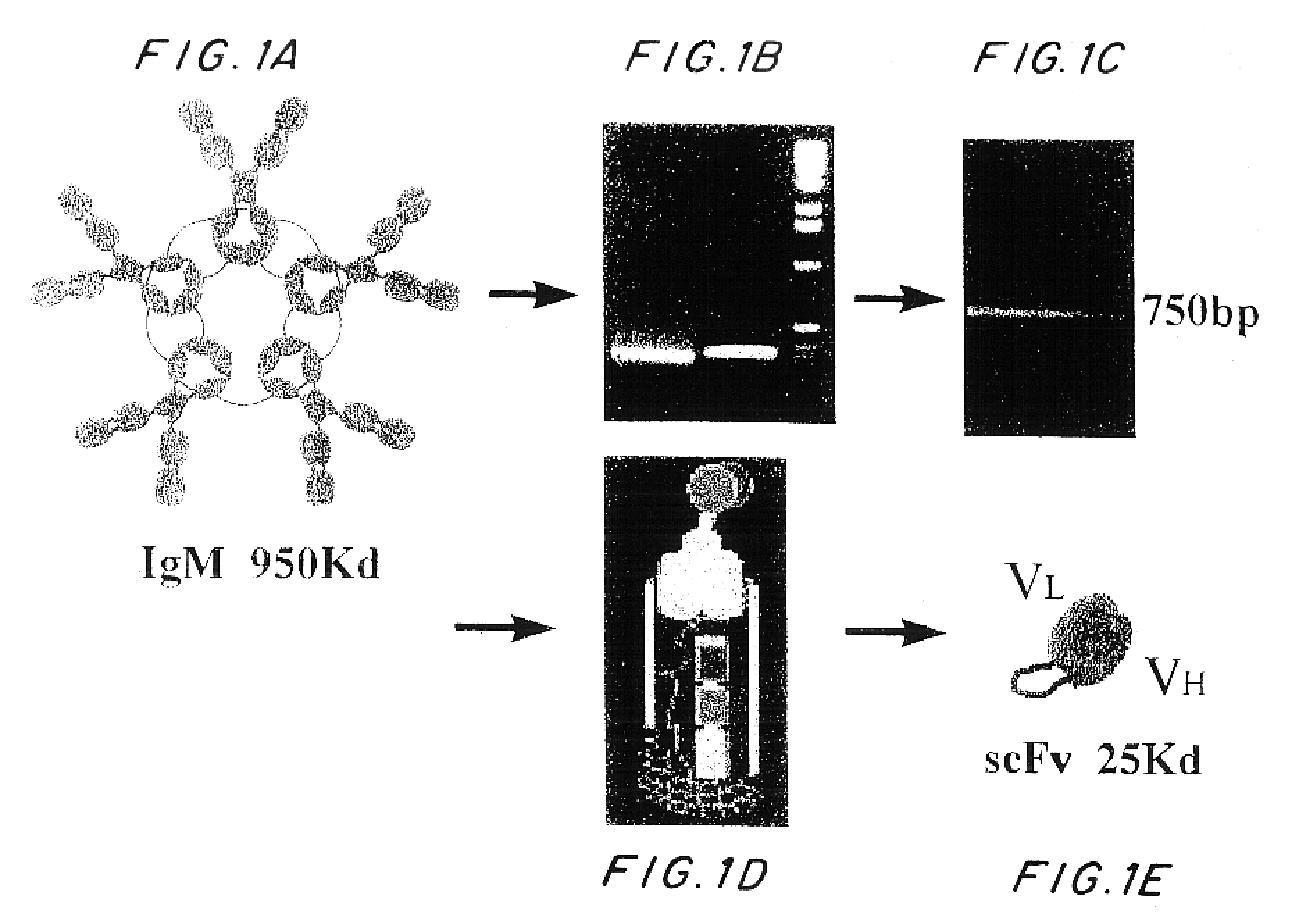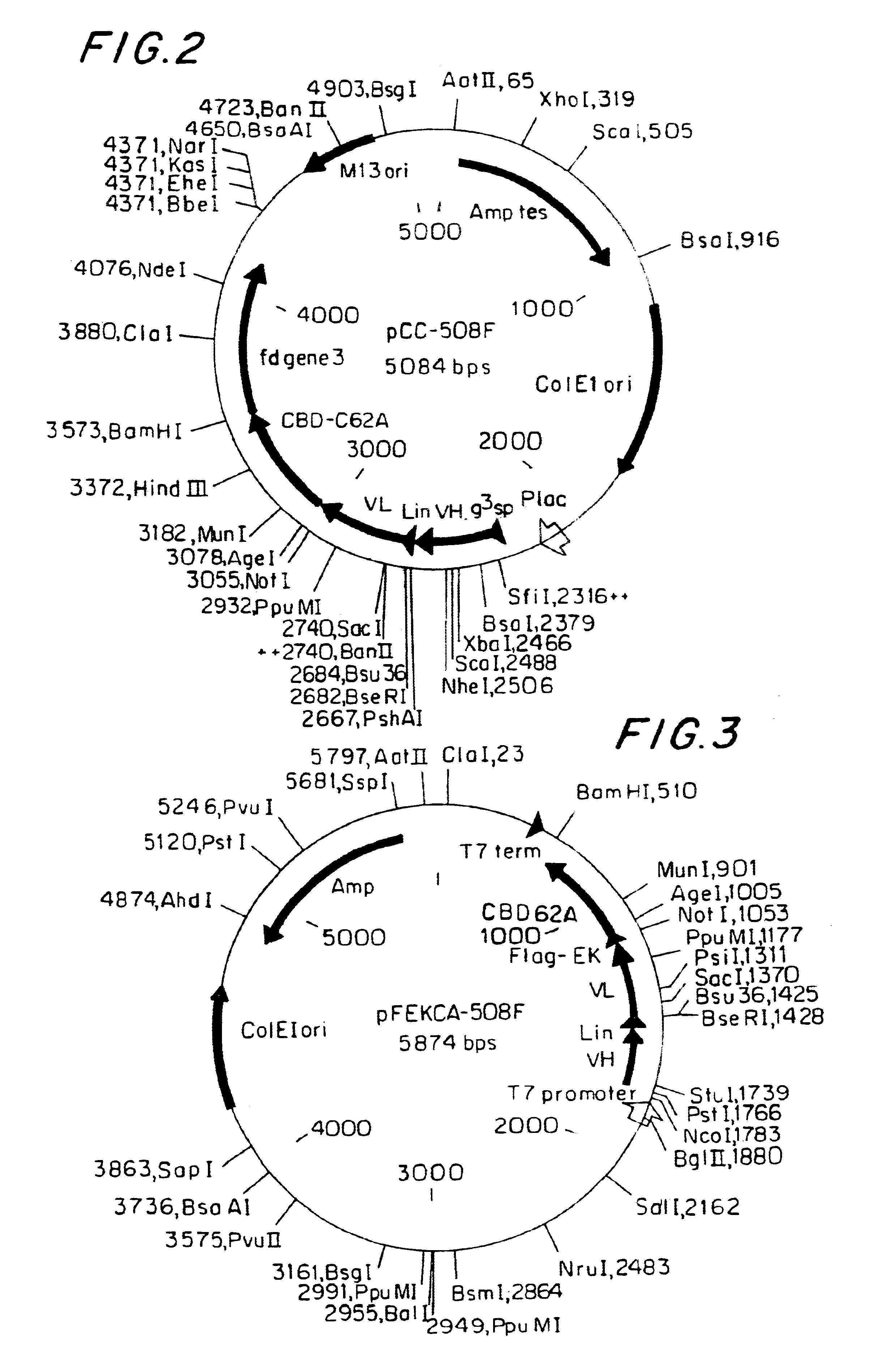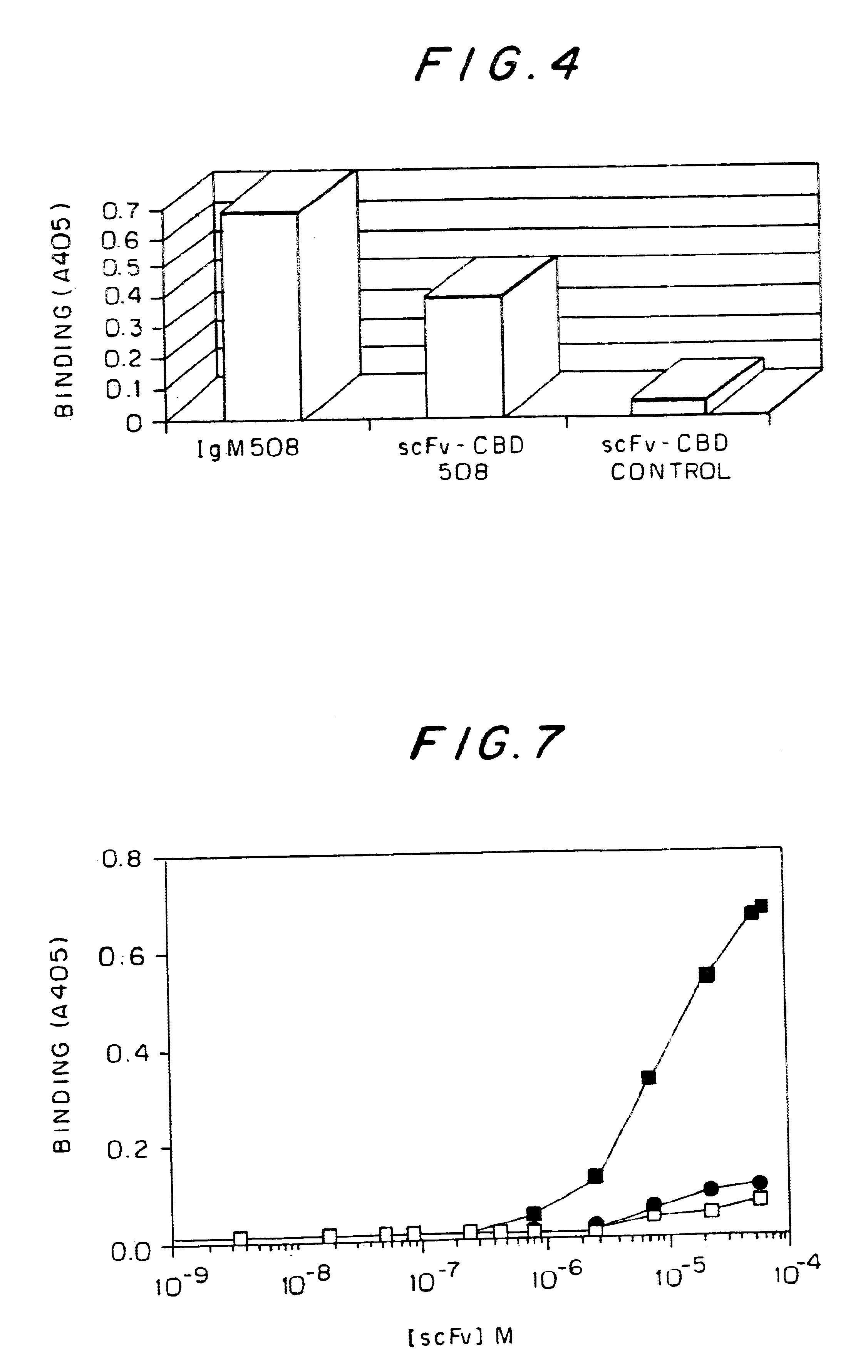Filamentous bacteriophage displaying a beta-amyloid epitope
- Summary
- Abstract
- Description
- Claims
- Application Information
AI Technical Summary
Problems solved by technology
Method used
Image
Examples
examples 1-6
below relate to the production of a single chain version of the anti aggregating monoclonal antibody. Examples 7-8 below relate to delivery of peptide or antibody displaying phage to the brain. Examples 9-14 below relate to the production of high titers of anti-aggregating polyclonal antibodies by direct immunization with beta amyloid antigens displayed on a phage, and to characterization of these antibodies.
example 1
Generation of an IgM Hybridoma 508
Immunization of a mouse with a 16 amino acid peptide of beta-amnyloid (acids 1-16 of SEQ ID NO:3) conjugated to KLH (SEQ ID NO:9) was carried out as described hereinabove. Repetitious immunization eventually produced a low but measurable antibody titer against beta-amyloid. Subsequent splenectomy of the immunized mouse facilitated preparation of IgM hybridoma 508 expressing scFvAb with specificity to beta-amyloid. RNA was subsequently extracted from this hybridoma. The IgM 508 hybridoma showed specific activity to A.beta. in preventing its toxic affects on PC12 cells (Anavi, S. 1998, M. Sc. thesis from the department of Molecular Microbiology and Biotechnology of the Tel-Aviv University, I).
example 2
Cloning of the Variable Domains of the 508 IgM Hybridoma as a scFv
MAb 508 showed specific recognition of .beta.-amhyloid and prevented its toxic affects on PC 12 cells (Anavi S., 1998, ibid). For cloning the 508 antibody as a scFv in a phage display vector, RNA was extracted from 10.sup.8 508 hybridoma cells and was used as a source for antibody variable region coding sequences. RT-PCR was used to amplify the variable domains that were cloned into the phage display vector pCC-Gal6(Fv), as described in Materials and Methods. When hybridoma derived antibodies are cloned as scFvs, some of the clones may contain aberrant sequences that are not functional. Therefore, to identify phagemid clones carrying functional .beta.-amhyloid binders from the generated clones, 10 individual clones were picked at random and soluble scFv-CBD fusion protein was produced thereby. FIG. 2 shows a physical map of plasmid pCC-508 which was used to express the 508-scFv. The CBD domain serves as an immunologic...
PUM
| Property | Measurement | Unit |
|---|---|---|
| Time | aaaaa | aaaaa |
| Composition | aaaaa | aaaaa |
Abstract
Description
Claims
Application Information
 Login to View More
Login to View More - R&D
- Intellectual Property
- Life Sciences
- Materials
- Tech Scout
- Unparalleled Data Quality
- Higher Quality Content
- 60% Fewer Hallucinations
Browse by: Latest US Patents, China's latest patents, Technical Efficacy Thesaurus, Application Domain, Technology Topic, Popular Technical Reports.
© 2025 PatSnap. All rights reserved.Legal|Privacy policy|Modern Slavery Act Transparency Statement|Sitemap|About US| Contact US: help@patsnap.com



